course
25 Machine Learning Projects for All Levels

Undertaking machine learning projects can you master some of the skills you'll need to become a professional in this niche. This article is a structured guide designed for individuals at varying levels of expertise, offering a diverse range of projects to enhance practical understanding in this pivotal field of data science.
Machine learning is instrumental in solving real-world problems and unlocking new potentials. The projects highlighted herein are meticulously curated, covering applications from predictive analytics using Random Forests to developing AI-powered chatbots with Transformers, providing insights into the application of theoretical knowledge in real-world scenarios.
These projects are more than just exercises; they blend theory and practice, aimed at providing a deeper understanding of algorithms and enabling the extraction of actionable insights from varied datasets.
AI Upskilling for Beginners
Why Start a Machine Learning Project?
These projects, grounded in real-world applications, offer a comprehensive learning experience across diverse domains and technologies, enabling participants to bridge the theoretical-practical divide effectively. The diversity of the projects ensures a broad learning spectrum, allowing individuals to hone pivotal skills, from data processing to model evaluation, and build a robust portfolio showcasing their proficiency in machine learning.
The benefits of undertaking machine learning projects include:
- Practical experience. Undertaking such projects offers hands-on experience in applying theoretical knowledge to real-world problems, enhancing essential machine learning skills.
- Portfolio building. Completing projects allows you to create a robust portfolio, showcasing your skills and knowledge and enhancing employability in this competitive field.
- Problem solving. Projects foster innovative problem-solving and critical thinking, enabling a deeper understanding of machine learning functionalities.
- Continuous learning. The diverse nature of projects promotes exploration and continuous learning within various domains of machine learning.
Machine Learning Projects for Beginners
These beginner machine learning projects consist of dealing with structured, tabular data. You will apply the skills of data cleaning, processing, and visualization for analytical purposes and use the scikit-learn framework to train and validate machine learning models.
If you want to learn the basic concepts of machine learning first, we have an awesome no-code understanding machine learning course. You can also check out some of our AI projects if you're looking to improve your skills in that area.
1. Predict Taxi Fares with Random Forests
In the Predict Taxi Fares project, you will be predicting the location and time to earn the biggest fare using the New York taxi dataset. You use tidyverse for data processing and visualization. To predict location and time, you will experiment with a tree base model such as Decision Tree and Random Forest.
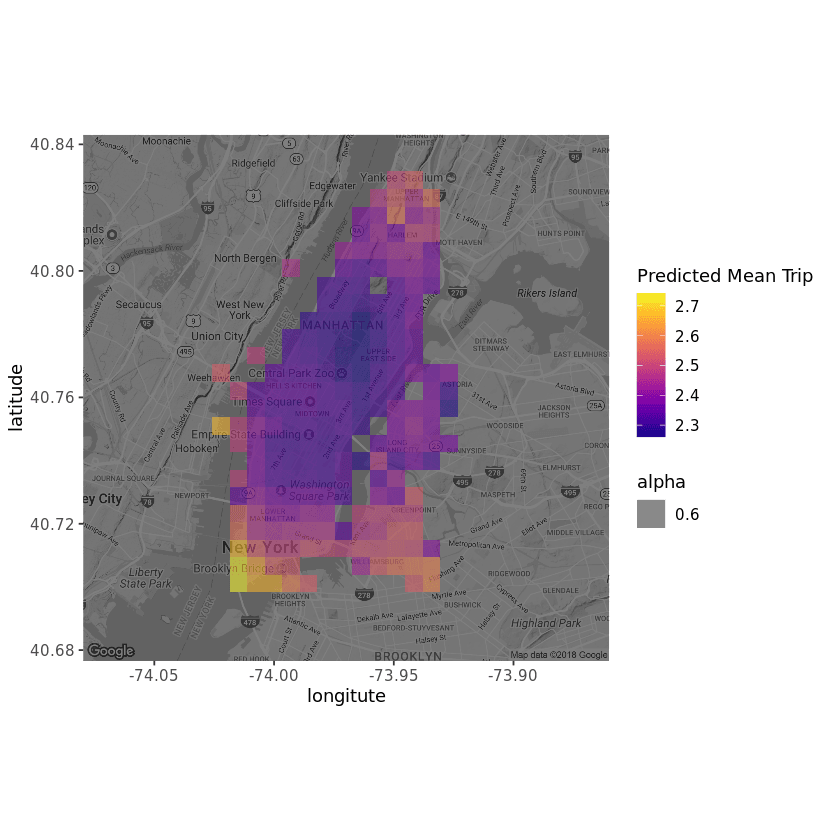
The Predict Taxi Fare project is a guided project, but you can replicate the result on a different dataset, such as Seoul's Bike Sharing Demand. Working on a completely new dataset will help you with code debugging and improve your problem-solving skills.
2. Classify Song Genres from Audio Data
In the Classify Song Genres machine learning project, you will be using the song dataset to classify songs into two categories: 'Hip-Hop' or 'Rock.' You will check the correlation between features, normalize data using scikit-learn’s StandardScaler, apply PCA (Principal Component Analysis) on scaled data, and visualize the results.
After that, you will use the scikit-learn Logistic Regression and Decision Tree model to train and validate the results. In this project, you will also learn some of the advanced techniques such as class balancing and cross-validation to reduce model bias and overfitting.
|
Decision Tree: |
|
Logistic Regression: |
Classifying Song Genres from Audio Data is a guided project. You can replicate the result on a different dataset, such as the Hotel Booking Demand one. You can use it to predict whether a customer will cancel the booking or not.
3. Predicting Credit Card Approvals
In the Predicting Credit Card Approvals project, you will build an automatic credit card approval application using hyperparameter optimization and Logistic Regression.
You will apply the skill of handling missing values, processing categorical features, feature scaling, dealing with unbalanced data, and performing automatic hyperparameter optimization using GridCV. This project will push you out of the comfort zone of handling simple and clean data.

Image by Author
Predicting Credit Card Approvals is a guided project. You can replicate the result on a different dataset, such as the Loan Data from LendingClub.com. You can use it to build an automatic loan approval predictor.
4. Store Sales
Store Sales is a Kaggle getting started competition where participants train various time series models to improve their score on the leaderboard.
In the project, you will be provided with store sales data, and you will clean the data, perform extensive time series analysis, feature scaling, and train the multivariate times series model.
To improve your score on the leaderboard, you can use ensembling such as Bagging and Voting Regressors.

Image from Kaggle
Store Sales is a Kaggle-based project where you can look at other participants' notebooks.
To improve your understanding of time series forecasting, try applying your skill to the Stock Exchange dataset and use Facebook Prophet to train a univariate time series forecasting model.
5. Give Life: Predict Blood Donations
In the Give Life: Predict Blood Donations project, you will predict whether or not a donor will give blood in a given time window. The dataset used in the project is from a mobile blood donation vehicle in Taiwan, and as part of a blood donation drive, the blood transfusion service center drives to various universities to collect the blood.
In this project, you are processing raw data and feeding it to TPOT Python AutoML(Automated Machine Learning) tool. It will search hundreds of machine learning pipelines to find the best one for our dataset.
We will then use the information from TPOT to create our model with normalized features and get an even better score.
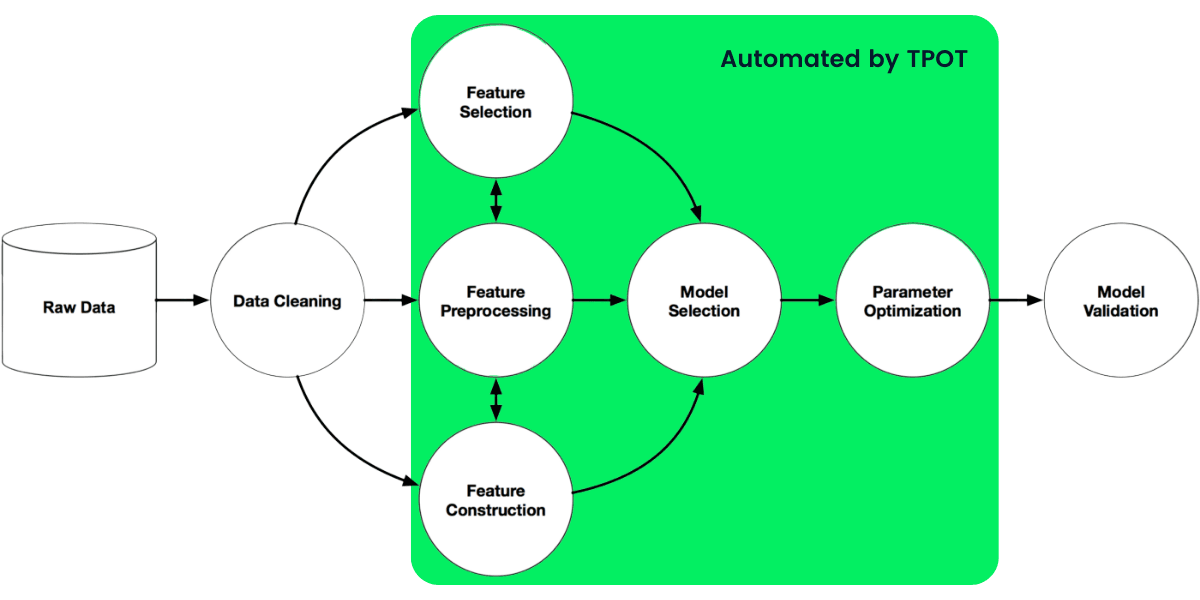
Image by Author
Give Life: Predict Blood Donations is a guided project. You can replicate the result on a different dataset, such as the Unicorn Companies. You can use TPOT to predict whether a company reaches a valuation of over 5 billion.
Learn the machine learning fundamentals to understand more about supervised and unsupervised learning.
Intermediate Machine Learning Projects
These intermediate machine learning projects focus on data processing and training models for structured and unstructured datasets. Learn to clean, process, and augment the dataset using various statistical tools.
6. The Impact of Climate Change on Birds
In the Impact of Climate Change on Birds project, you will train the Logistic Regression model on bird sightings and climate data using caret. You will perform data cleaning and nesting, prepare data for spatial analytics, create pseudo-absences, train glmnet models, and visualize results of four decades on the map.
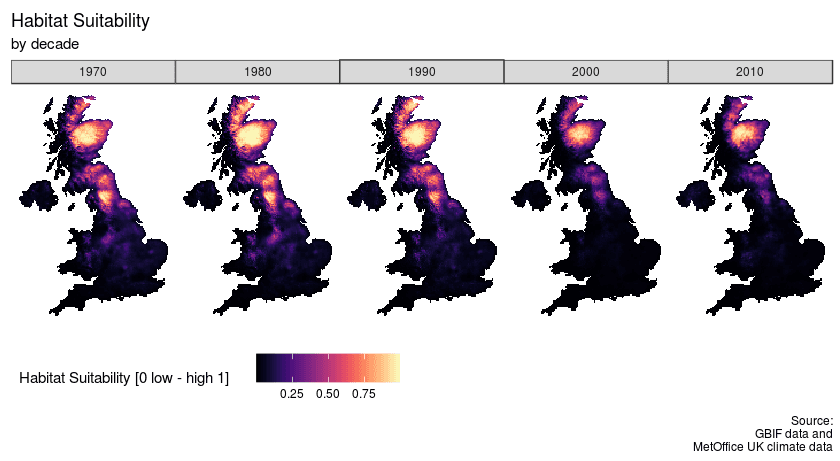
The Impact of Climate Change on Birds is a guided intermediate machine learning project. You can replicate the result on a different dataset, such as the Airbnb Listings dataset. You can use caret to predict the price of the listings based on features and locations.
Become a Machine Learning Scientist with R in 2 months and master various visualization and machine learning R packages.
7. Find Movie Similarity from Plot Summaries
In the Find Movie Similarity from Plot Summaries project, you will use various NLP (Natural Language Processing) and KMeans to predict the similarity between movies based on the plot from IMDB and Wikipedia.
You will learn to combine the data, perform Tokenization and stemming on text, transform it using TfidfVectorizer, create clusters using the KMeans algorithm, and finally plot the dendrogram.

Try replicating the result on a different dataset, such as the Netflix Movie dataset.
8. The Hottest Topics in Machine Learning
In the Hottest Topics in Machine Learning project, you will use text processing and LDA(Linear Discriminant Analysis) to discover the latest trend in machine learning from the large collection of NIPS research papers. You will perform text analysis, process the data for word cloud, prepare data for LDA analysis, and analyze trends with LDA.
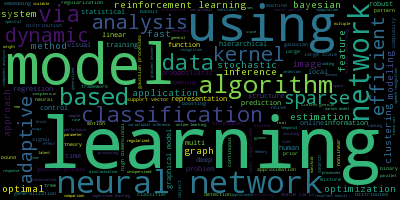
9. Naïve Bees: Predict Species from Images
In the Naïve Bees: Predict Species from Images project, you will process the image and train the SVM(Support Vector Classifier) model to distinguish between a honey bee and a bumble bee. You will manipulate and process the images, extracting the feature and flattening it into a single row, using StandardScaler and PCA to prepare the data for the model, train the SVM model, and validate the results.
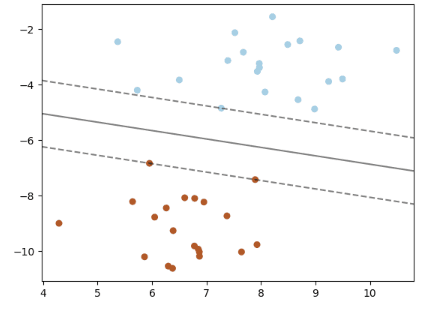
10. Speech Emotion Recognition with librosa
In the Speech Emotion Recognition with Librosa project, you will process sound files using Librosa, sound file, and sklearn for the MLPClassifier to recognize emotion from sound files.
You will load and process sound files, perform feature extraction, and train the Multi-Layer Perceptron classifier model. The project will teach you the basics of audio processing so that you can advance into training a deep learning model to achieve better accuracy.
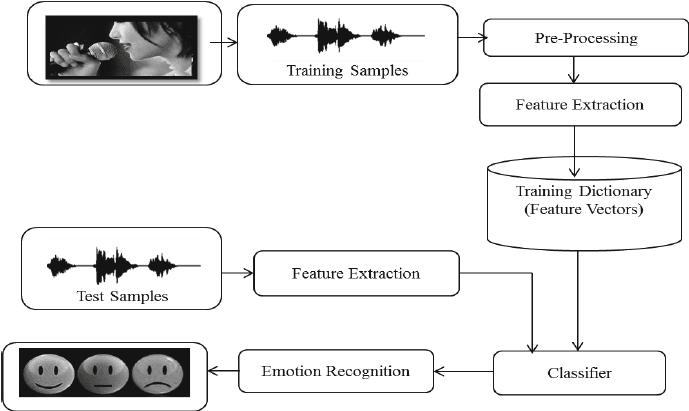
Image from researchgate.net
Advanced Machine Learning Projects
These advanced machine learning projects focus on building and training deep learning models and processing unstructured datasets. You will train convolutional neural networks, gated recurrent units, finetune large language models, and reinforcement learning models.
11. Build Rick Sanchez Bot Using Transformers
In the Build Rick Sanchez Bot Using Transformers project, you will use DialoGPT and the Hugging Face Transformer library to build your AI-powered chatbot.
You will process and transform your data, build and finetune Microsoft’s Large-scale Pretrained Response Generation Model (DialoGPT) on Rick and Morty dialogues dataset. You can also create a simple Gradio app to test your model in real-time: Rick & Morty Block Party.
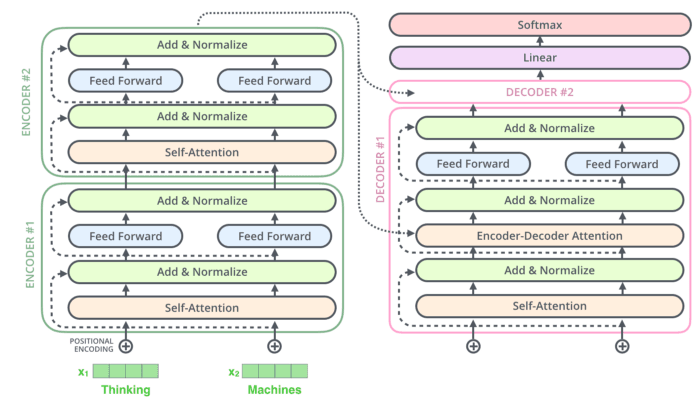
12. ASL Recognition with Deep Learning
In the ASL Recognition project, you will use Keras to build a CNN (Convolutional Neural Network) for American Sign Language image classification.
You will visualize the images and analyze the data, process the data for the modeling phase, compile, train, and CNN on the image dataset, and visualize the wrong predictions. You will use the wrong predictions to improve the model performance.

Read a Deep Learning tutorial to understand the basics and real-world applications.
13. Naïve Bees: Deep Learning with Images
In the Naïve Bees project, you will build and train a deep learning model to distinguish between honey bees and bumble bees images. You will start with image and label data processing.
Then, you will normalize the image and split the dataset into test and evaluation. After that, you will build and compile deep convolutional neural networks using Keras, and finally, you will train and evaluate the results.
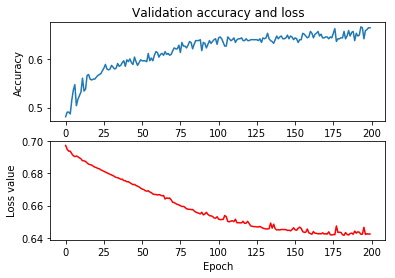
14. Stock Market Analysis And Forecasting Using Deep Learning
In the Stock Market Analysis And Forecasting project, you will use GRUs (Gated Recurrent Unit) to build deep learning forecasting models for predicting stock prices of Amazon, IBM, and Microsoft.
In the first part, you will dive deep into times series analytics to learn about trends and seasonality of stock price, and then you will use this information to process your data and build a GRU model using PyTorch. For guidance, you can check out the code source on GitHub.
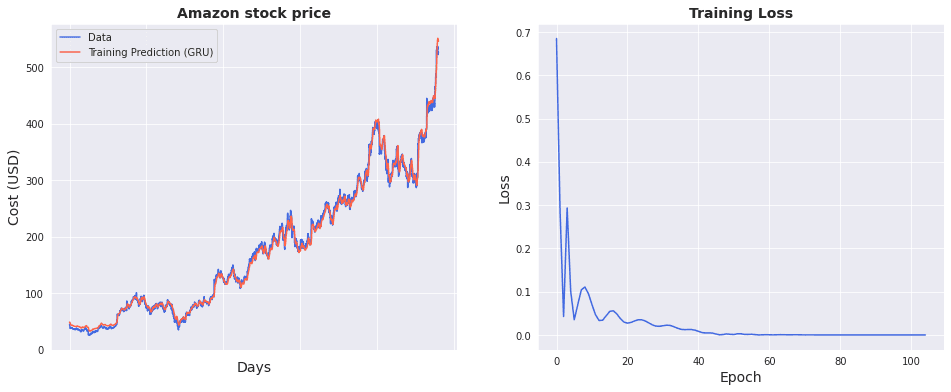
Image from Soham Nandi
15. Reinforcement Learning for Connect X
The Connect X is a getting started simulation competition by Kaggle. Build an RL (Reinforcement Learning) agent to compete against other Kaggle competition participants.
You will first learn how the game works and create a dummy functional agent for a baseline. After that, you will start experimenting with various RL algorithms and model architectures. You can try building a model on Deep Q-learning or Proximal Policy Optimization algorithm.
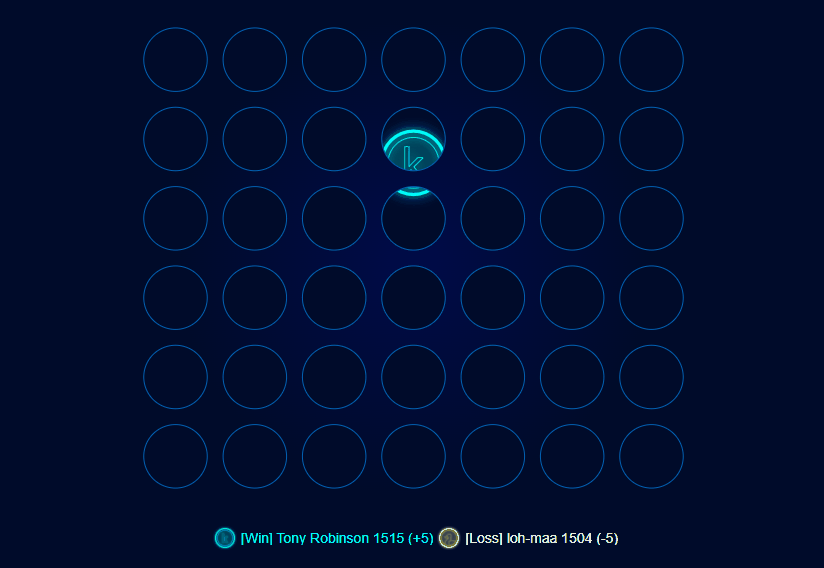
Gif from Connect X | Kaggle
Start your professional machine learning journey by taking Machine Learning Scientist with Python career track.
Machine Learning Projects for Final Year Students
The final year project requires you to spend a certain amount of time producing a unique solution. You will research multiple model architecture, use various machine learning frameworks to normalize and augment the datasets, understand the math behind the process, and write a thesis based on your results.
16. Multi-Lingual ASR With Transformers
In the Multi-Lingual ASR model, you will fine-tune the Wave2Vec XLS-R model using Turkish audio and transcription to build an automatic speech recognition system.
First, you will understand the audio files and text dataset, then use a text tokenizer, extract features, and process the audio files. After that, you will create a trainer, WER function, load pretrained models, tune hyperparameters, and train and evaluate the model.
You can use the Hugging Face platform to store the model weights and publish web apps to transcript speech in real-time: Streaming Urdu Asr.
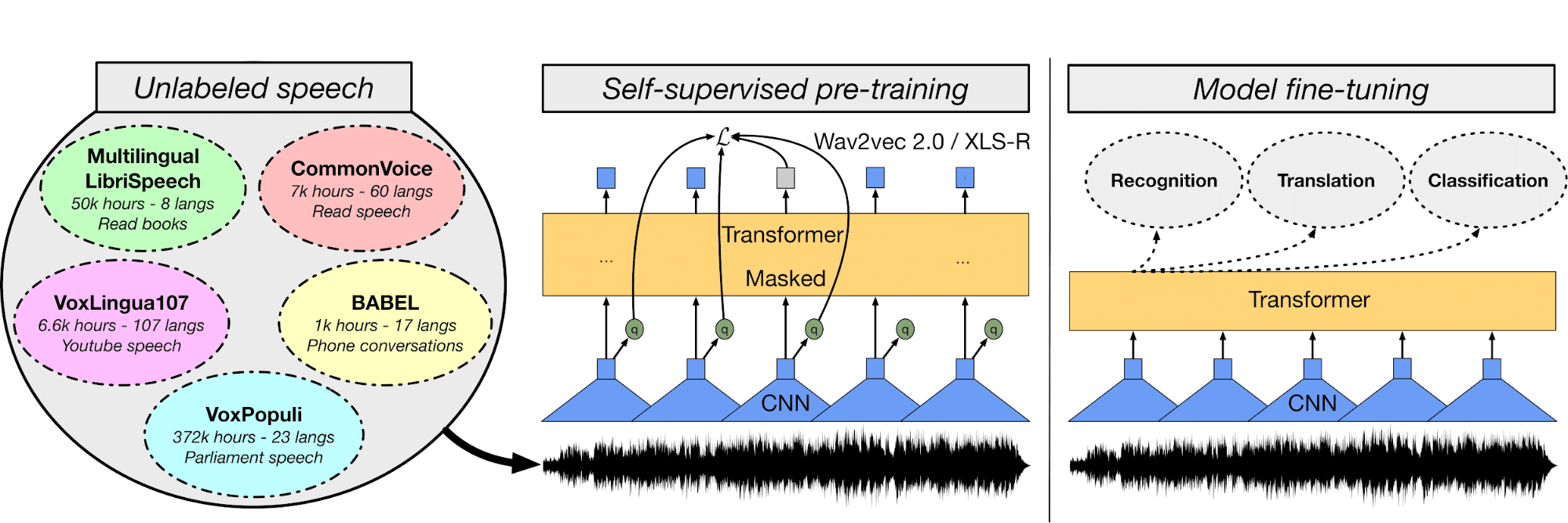
Image from huggingface.co
17. One Shot Face Stylization
In the One Shot Face Stylization project, you can either modify the model to improve the results or finetune JoJoGAN on a new dataset to create your stylization application.
It will use the original image to generate a new image using GAN inversion and fine-tuning a pre-trained StyleGAN. You will understand various generative adversarial network architects. After that, you will start collecting a paired dataset to create a style of your choice.
Then, with the help of a sample solution of the previous version of StyleGAN, you will experiment with the new architect to produce realistic art.

Image was created using JoJoGAN
18. H&M Personalized Fashion Recommendations
In the H&M Personalized Fashion Recommendations project, you will build product recommendations based on previous transactions, customer data, and product metadata.
The project will test your NLP, CV (Computer Vision), and deep learning skills. In the first few weeks, you will understand the data and how you can use various features to come up with a baseline.
Then, create a simple model that only takes the text and categorical features to predict recommendations. After that, move on to combining NLP and CV to improve your score on the leaderboard. You can also get better at understanding the problem by reviewing community discussions and code.

Image from H&M EDA FIRST LOOK
19. Reinforcement Learning Agent for Atari 2600
In the MuZero for Atari 2600 project, you will build, train, and validate the reinforcement learning agent using the MuZero algorithm for Atari 2600 games. Read the tutorial to understand more about the MuZero algorithm.
The goal is to build a new or modify existing architecture to improve the score on a global leaderboard. It will take more than three months to understand how the algorithm works in reinforcement learning.
This project is math-heavy and requires you to have Python expertise. You can find proposed solutions, but to achieve top rank in the world, you have to build your solution.

Gif from Author | Hugging Face
20. MLOps End-To-End Machine Learning
The MLOps End-To-End Machine Learning project is necessary for you to get hired by top companies. Nowadays, recruiters are looking for ML engineers who can create end-to-end systems using MLOps tools, data orchestration, and cloud computing.
In this project, you will build and deploy a location image classifier using TensorFlow, Streamlit, Docker, Kubernetes, cloudbuild, GitHub, and Google Cloud. The main goal is to automate building and deploying machine learning models into production using CI/CD. For guidance, read Machine Learning, Pipelines, Deployment, and MLOps tutorial.

Image from Senthil E
Machine Learning Projects for Portfolio Building
For building your machine learning portfolio, you need projects that stand out. Show the hiring manager or recruiter that you can write code in multiple languages, understand various machine learning frameworks, solve unique problems using machine learning, and understand the end-to-end machine learning ecosystem.
21. BERT Text Classifier on Tensor Processing Unit
In the BERT Text Classifier project, you will use the large language model and fine-tune it on the Arabizi language using TPU (Tensor Processing Unit). You will learn to process text data using TensorFlow, modify the model architecture to get better results, and train it using Google’s TPUs. It will reduce your training time by 10X compared to GPUs.

Image from Hugging Face
22. Image Classification Using Julia
In the Image Classification Using FastAI.jl project, you will use Julia, which is designed for high-performance machine learning tasks to create simple image classification. You will learn a new language and a machine learning framework called FastAI.
You will also learn about FastAI API to process and visualize the imagenette2–160 datasets, load the ResNet18 pretrained model and train it using GPU. This project will open a new world for you to explore and develop deep learning solutions using Julia.
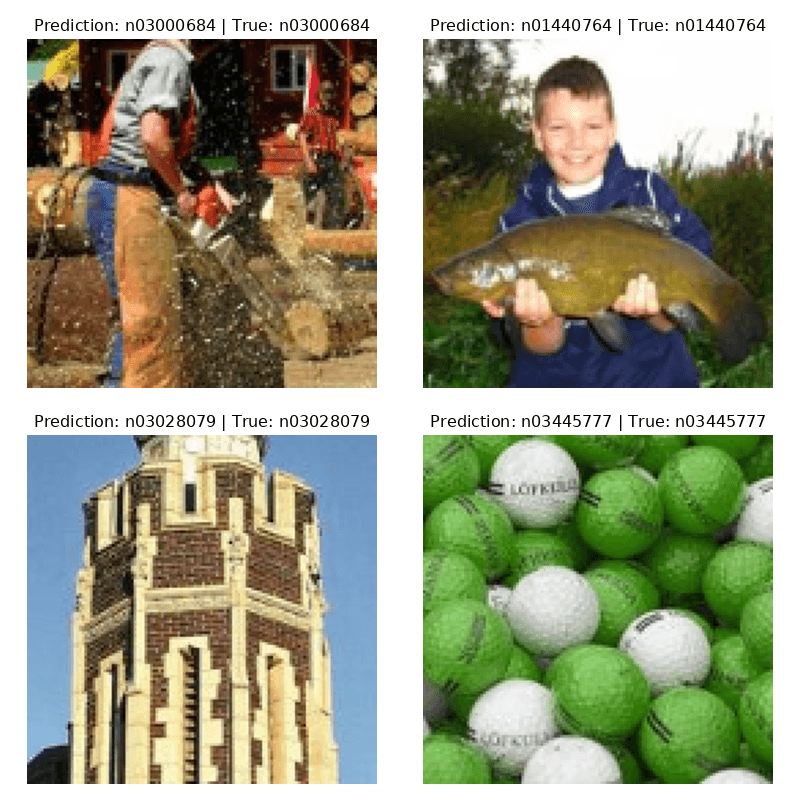
Image from Author
23. Image Caption Generator
In the Image Caption Generator project, you will use Pytorch to build CNN and LSTM models to create image caption generators. You will learn to process text and image data, build a CNN encoder and RNN decoder, and train it on tuned hyperparameters.
To build the best caption generator, you need to learn about encoder-decoder architecture, NLP, CNN, LSTM, and experience in creating trainer and validation functions using Pytorch.
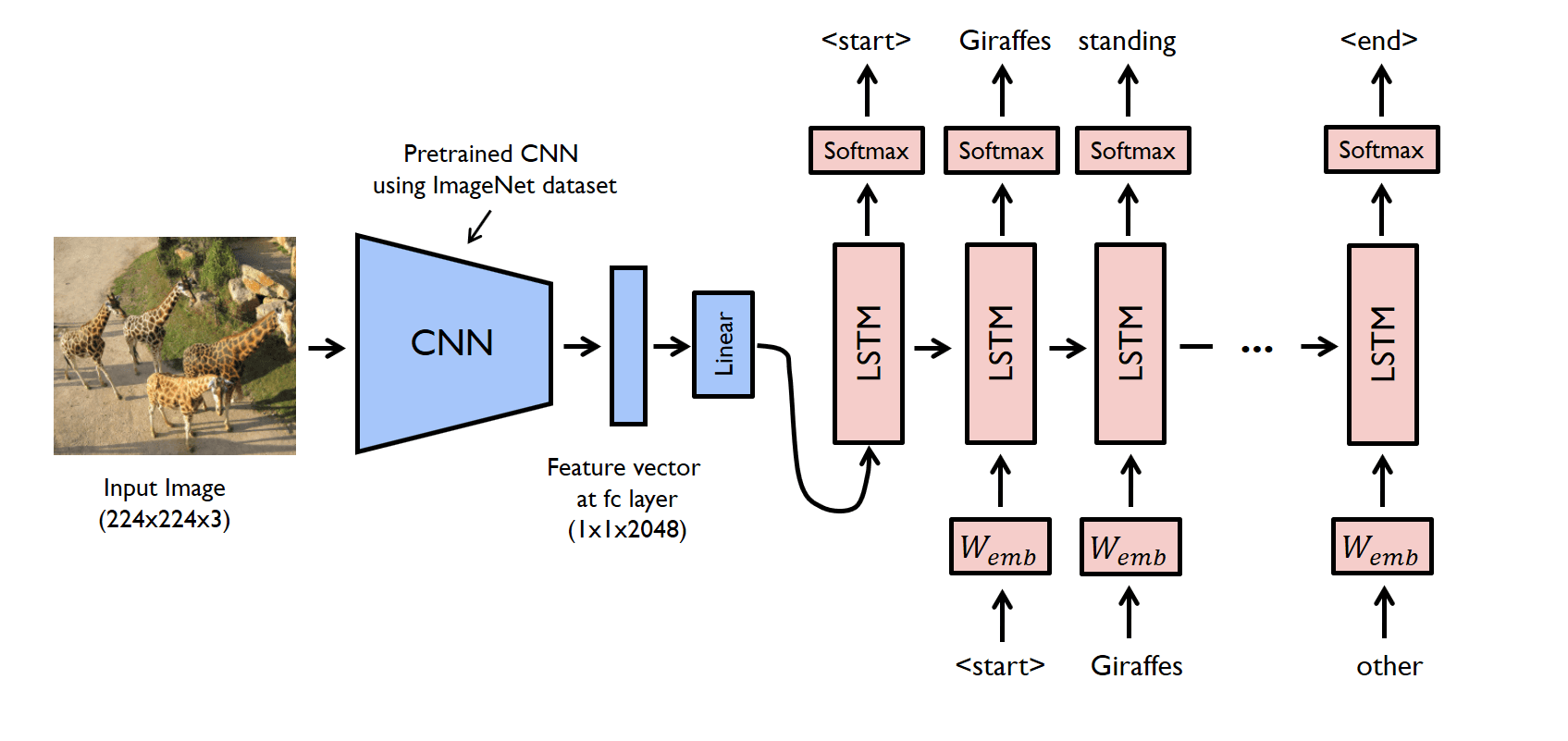
Image from Automatic Image Captioning Using Deep Learning
24. Generate Music using Neural Networks
In the Generate Music project, you will use Music21 and Keras to build the LSTM model for generating music. You will learn about MIDI files, Notes, and Chords and train the LSTM model using MIDI files.
You will also learn to create model architecture, checkpoints, and loss functions and learn to predict notes using random input. The main goal is to use MIDI files to train neural networks, extract output from the model, and convert them into the MP3 music file.
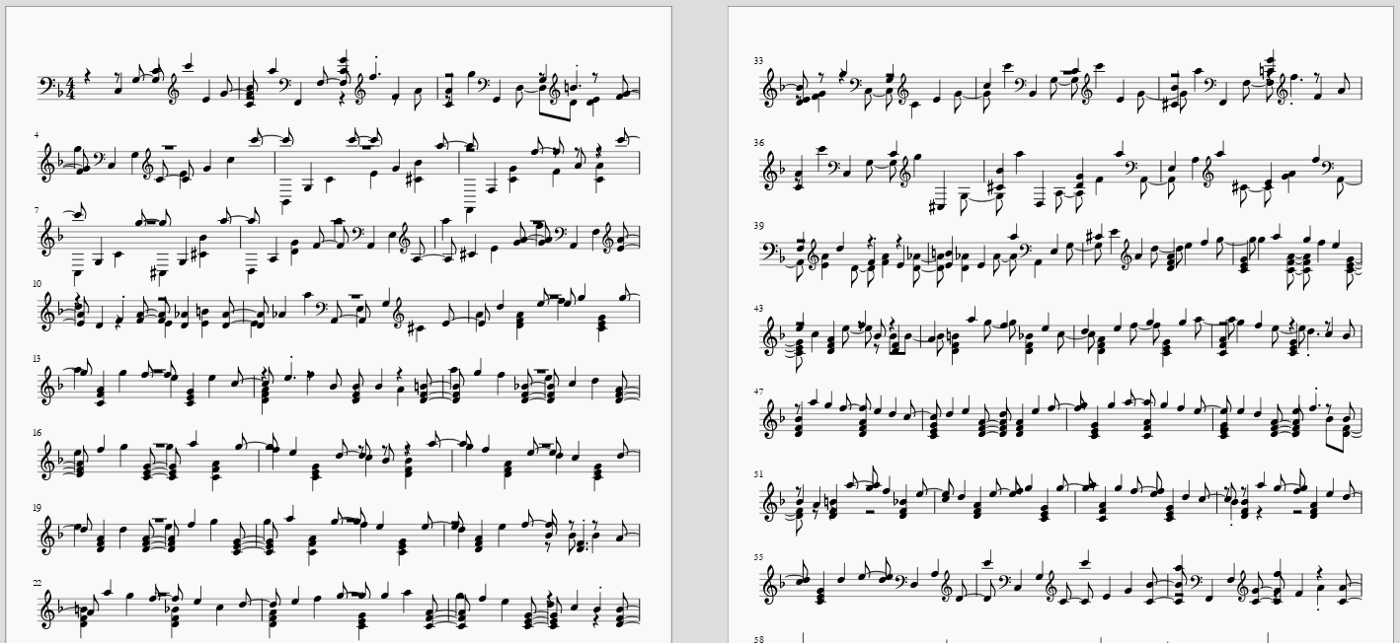
Image from Sigurður Skúli | Music generated by the LSTM network
25. Deploying Machine Learning Application to the Production
The Deploying Machine Learning Application to the Production project is highly recommended for machine learning professionals looking for better opportunities in the field.
In this project, you will deploy machine learning applications on the cloud using Plotly, Transformers, MLFlow, Streamlit, DVC, GIT, DagsHub, and Amazon EC2. It is a perfect way to showcase your MLOps skills.
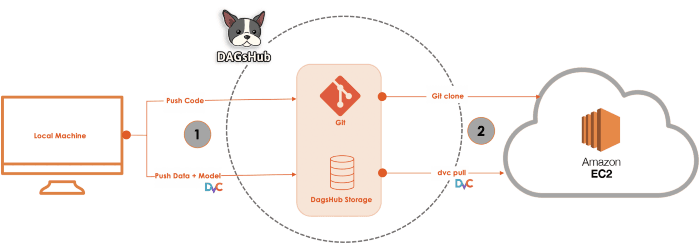
Image from Zoumana Keita
How to Start a Machine Learning Project?
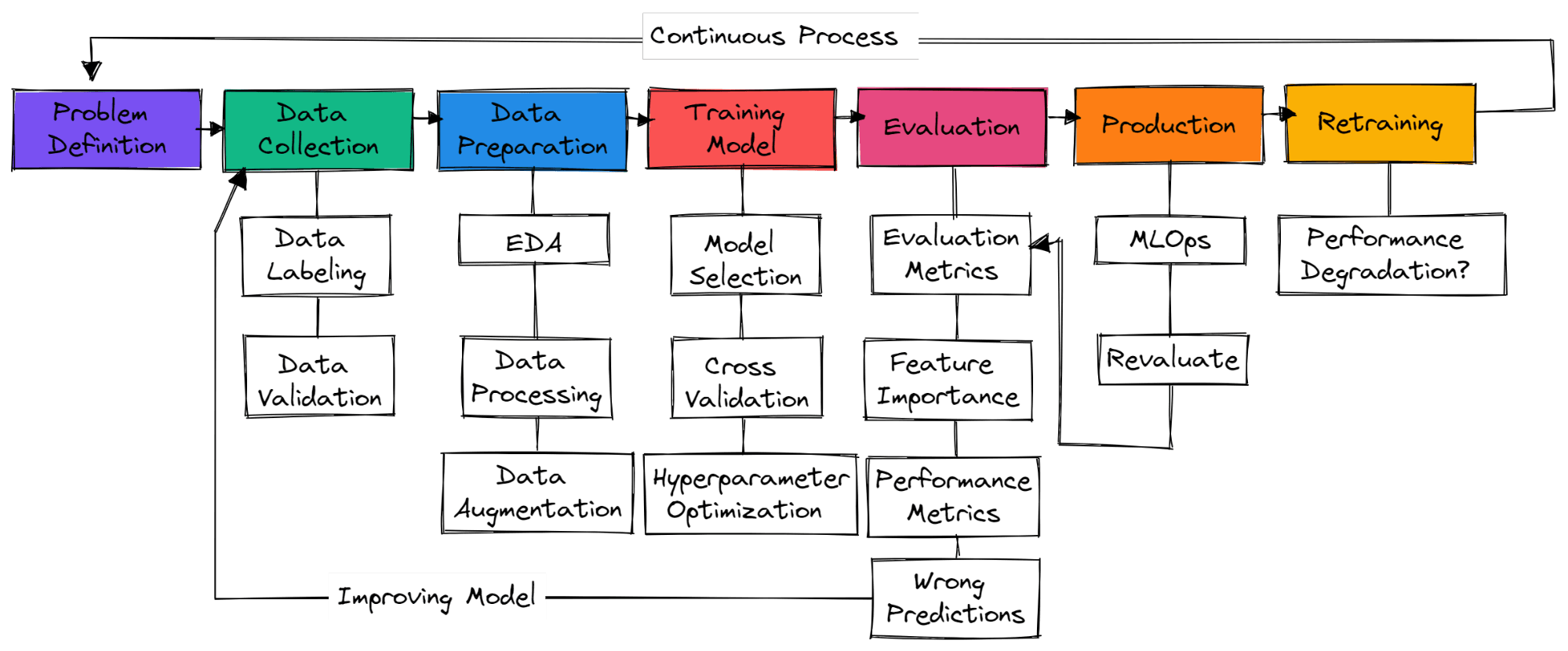
Image by Author
There are no standard steps in a typical machine learning project. So, it can be just data collection, data preparation, and model training. In this section, we will learn about the steps required to build the production-ready machine learning project.
Problem definition
You need to understand the business problem and come up with a rough idea of how you are going to use machine learning to solve it. Look for research papers, open source projects, tutorials, and similar applications used by other companies. Make sure your solution is realistic, and data is easily available.
Data collection
You will be collecting data from various sources, cleaning and labeling it, and creating scripts for data validations. Make sure your data is not biased or contains sensitive information.
Data preparation
Fill missing values, clean, and process data for data analysis. Use visualization tools to understand the distribution of data and how you can use features to improve the model performance. Feature scaling and data augmentation are used to transform data for a machine learning model.
Training model
selecting neural networks or machine learning algorithms that are commonly used for specific problems. Training model using cross-validation and using various hyperparameter optimization techniques to get optimal results.
Model evaluation
Evaluating the model on the test dataset. Make sure you are using the correct model evaluation metric for specific problems. Accuracy is not a valid metric for all kinds of problems. Check the F1 or AUC score for classification or RMSE for regression. Visualize model feature importance to drop features that are not important. Evaluate performance metrics such as model training and inference time.
Make sure the model has surpassed the human baseline. If not, get back to collecting more quality data and start the process again. It is an iterative process where you will keep training with various feature engineering techniques, mode architects, and machine learning frameworks to improve the performance.
Production
After achieving state of the art results it is time to deploy your machine learning model to production/cloud using MLOps tools. Monitor the model on real-time data. Most models fail in production, so it is a good idea to deploy them for a small subset of users.
Retrain
If the model fails to achieve results, you will go back to the drawing board and come up with a better solution. Even if you achieve great results, the model can degrade with time due to data drift and concept drift. Retraining new data also makes your model adapt to real-time changes.
Earn a Top AI Certification
Machine Learning Project FAQs
What are the 3 key steps in a machine learning project?
Data preparation, feature engineering, and model selection/training. The key steps can differ from project to project. In deep learning projects, it is data processing, model selection, and model validation.
How do you start an AI/ML project?
- Understand business problems and how machine learning can help solve it.
- Make sure you have the required quality data for training.
- Cleaning and processing the data.
- Understand your data by reviewing a business case study and performing data analytics to understand the distribution.
- Defining model and business performance metrics.
- Model selection and training.
- Model validation and retraining.
- Implementing MLOps (Machine Learning Operations)
- Deploying the model to production.
Is machine learning hard?
Yes. To get hired as a machine learning engineer, you need to master multiple programming languages, understand machine learning and deep learning algorithms, and learn advanced math to improve the model architecture.
You will also learn about the operation side of things, such as MLOps, cloud computing, active learning, experiment tracking, dashboarding, CI/CD, and testing the models on real data.
Is Python good for machine learning?
Yes, it is popular among machine learning practitioners and researchers.
- It is easy to learn and read.
- Modern machine learning tools are based on Python
- It has a massive supportive community
- Multiple Integrations with other languages and tools.
- You can perform almost all of the tasks from data analytics to web development.
Can I learn machine learning without coding?
Yes, but you will be limited in achieving state-of-the-art results. Coding your machine learning model gives you control over data, parameters, model architecture, system performance, and model validation.
The no-code tools are getting better in providing good results on average data, but if you want to get hired, you need to learn the basics and learn to create the whole ecosystem from scratch.
Is machine learning a good career?
Yes, machine learning is an amazing career that allows you to learn and contribute to the evolution of artificial intelligence. The demand is high among developed countries, and on average, in the USA, you can get $111,139+ per year. Read our guide on how to become a machine learning engineer.
Are there any other projects that might be relevant to me?
We have many projects that are suitable for all kinds of interests and skill levels. Check out our:
ur:
Courses for Machine learning
course
Machine Learning for Business
course
Machine Learning with PySpark
blog
20 Data Analytics Projects for All Levels
blog
19 Computer Vision Projects From Beginner to Advanced
blog
7 Exciting AI Projects for All Levels in 2024
blog
60+ Python Projects for All Levels of Expertise
Bekhruz Tuychiev
16 min
blog
The Top 25 Machine Learning Interview Questions For 2024
tutorial
7 NLP Projects for All Levels
Eugenia Anello
7 min